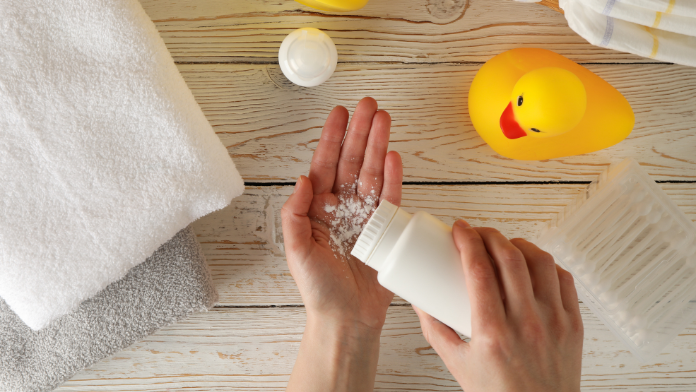Il baby powder can cause the ovarian cancer? The debate reopens after Johnson & Johnson announced that it will pay almost 6.5 billion dollars to resolve the civil lawsuits brought by many women with the same accusation: the talc produced by the American pharmaceutical giant would have contained traces of asbestos and caused them to develop ovarian cancer. Although it has always denied this thesis, the company has however withdrawn the talc in question from the market some time ago. In the past, Johnson & Johnson had already been sentenced to compensate some of its customers for almost $9 billion for the same reason.
Talc and asbestos: what is the relationship?
Why are talc and asbestos often associated, as in the case of the Johnson & Johnson legal proceedings? The reason lies in the fact that both are minerals containing magnesium and silicon, are formed in similar natural contexts and, therefore, can undergo contamination. For this reason, talc may contain traces of asbestos, a substance capable of causing pulmonary fibrosis, respiratory failure and tumor forms, such as mesothelioma, in highly exposed individuals. According to theInternational Agency for Research on Cancer (IARC), asbestos has in fact been classified as a human carcinogen, as has talc containing asbestos (group 1).
However, as he also reminded us Anna Franzetti, Head of the Mission Dissemination and Educational Projects Area of the AIRC Foundation, in an old interview, today the talc used in the cosmetic, food and pharmaceutical sectors is extracted from mines that do not have asbestos contamination. Since the seventies, in fact, the law requires that talc-based products for personal hygiene (and not only) be completely free of asbestosso much so that the contaminated extraction sites have now been inactive for decades.
To date, therefore, the problem of the possible presence of asbestos in commonly used talc is non-existent. The same thing cannot be said for the decades preceding the entry into force of the law, therefore before the Seventies. This gave rise to a series of court cases, especially against Johnson & Johnson, the manufacturer of the most famous talcum powder for adults and children, focused on the possible link between the use of talcum powder for intimate hygiene and the onset of cancer to the ovary. Echoing this were some journalistic investigations which revealed cover-ups by the US company regarding the presence of asbestos in the talc produced in the early Seventies.
Can asbestos-free talc cause ovarian cancer?
The International Agency for Research on Cancer (IARC) has classified talc not containing asbestos among the non-carcinogenic for humans (group 3), placing it on a prudential basis the perineal use of talc among the possible carcinogens for humans (group 2B). Why, then, does the IARC not exclude that talc without traces of asbestos used in the genital area could increase the risk of ovarian cancer?
The weakness of case-control studies
Because some have been conducted over the years studies, the so-called case-control studies, with the aim of understanding common events or habits between women who actually became ill with ovarian cancer (the “cases”) and those who did not become ill (the “controls”). The idea was to quantify the use of talcum powder for intimate hygiene based on the statements of the women interviewed. The results, which in many cases have highlighted a correlation between the use of talcum powder on the genitals and the onset of ovarian cancer, are however unreliable because memories are often labile and can be subject to various influences.
Cohort studies, which are more reliable, have shown no relationship between talc use and ovarian cancer
The case is different cohort studies, in which healthy women recruited were followed for a certain period of time by researchers, with the aim of collecting data on their habits, including the use of talc in the perineal and endovaginal areas. From the data collected it emerged that among women who had developed ovarian cancer there was no higher than average number of talc users. As Dr. Franzetti also confirmed to us, in fact, the scientific evidence accumulated in recent years, which used larger samples and more rigorous methods than case-control studies, do not demonstrate any relationship between talc use and increased risk of ovarian cancer.
As he also reminded us Trojan horseNational President of the Italian Society of Gynecology and Obstetrics (Sigo), in this interview on the most famous hoaxes about tumors, there are numerous cohort studies carried out on this topic. «The latest in chronological order was published in the Jama magazine in 2020 and analyzed data from four previous American studies carried out on 252,745 women. From the results There was no significant association between the use of talcum powder on the genitals and the risk of ovarian cancer. So anyone who has used talc in intimate hygiene has no reason to be alarmed.”
Can you continue to use talcum powder in the genital area?
In light of these data, there are no particular reasons to be alarmed, even if talc has been used in intimate hygiene in the recent past. However, not having yet certain and conclusive data on the possible link between the use of talc and the onset of ovarian cancer, Franzetti and Trojano suggest avoid the use of talc at the perineal and intravaginal levels as a complete precaution.
